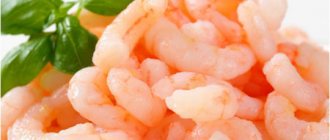Symptoms and treatment of pancreatitis
- About pancreatitis
- Nutrition for pancreatitis
- Treatment of pancreatitis
- Recipes for pancreatitis
Nuts for pancreatitis. Is it possible to eat nuts for pancreatitis? What nuts can you eat if you have pancreatitis?
Sometimes you really want nuts and don’t know if you can eat nuts if you have pancreatitis . I recently learned from my own experience that it is possible to eat nuts during chronic pancreatitis, but subject to certain conditions:
1. You can eat nuts during pancreatitis if you have a stable remission and there have been no exacerbations of pancreatitis for a long time;
2. You can eat low-fat nuts (more details below).
3. You can eat nuts during pancreatitis in small quantities (for example, pistachios - 10 pieces, walnuts - 3-4 pieces, etc.) 4. Do not forget to chew nuts thoroughly if you have pancreatitis.
You can eat nuts for pancreatitis due to the fact that they consist of vegetable proteins and light fats. This is why nuts are easier to digest than processed foods. After all, nuts are digested almost independently without loading the pancreas, but eating nuts with pancreatitis must be done with great caution due to their high fat content.
Proteins may be digested, but fats with pancreatitis are a problem. Therefore, eating a lot of nuts is not recommended for pancreatitis .
Due to their structure, nuts in the body of a healthy person are digested from 2 to 3 hours, and how long it takes a pancreatic patient to digest nuts depends on the condition of his pancreas.
Most nuts, with the exception of chestnuts, have the following:
- low starch content;
Pay attention to the numbers and draw conclusions. If you overeat nuts with pancreatitis, especially those with a high fat content, then hello dropper!
Diet for inflammation of the pancreas - sample menu
Breakfast : oatmeal (you can add raisins).
Lunch : mashed potatoes, light skinless chicken soup and tea. Afternoon snack: a glass of low-fat kefir and a couple of apples (or other fruits of your choice).
Dinner : buckwheat or rice with steamed cutlets or meatballs.
Diet for pancreatitis of the pancreas should not be fatty or high in calories, that is, all smoked foods, baked goods, confectionery products, and dairy products with a high fat content should be removed from the diet.
Recipes for dietary dishes for pancreatitis
Cottage cheese casserole contains a large amount of proteins, which are necessary for pancreatitis.
Ingredients
- 2 eggs
- 4 cloves minced garlic
- 1/2 tsp. onion powder
- Parmesan cheese 452g.
- skim cheese
- 1 cup chopped greens (cabbage or spinach)
Cooking method:
Beat the eggs and combine the remaining ingredients in a large bowl. Grease a baking sheet and place the contents of the bowl. Bake at 350f/200C for 15-20 minutes.
List of dietary dishes:
Buckwheat cutlets, omelet, chicken breast, cheesecakes without flour, chicken with mushrooms, cottage cheese dumplings, pollock in the oven, vegetable-based soup, fish kebab, stewed artichokes, lean muffins, stuffed zucchini.
These dishes are suitable for patients with pancreatitis and simply for people on a diet.
Chief gastroenterologist of the Russian Federation: “PANCREATITIS does not go away?! A simple treatment method has already healed hundreds of patients at home! To cure the pancreas forever you need...” Read more »
Recipes for pancreatitis
Chicken and croutons
Also read: Is milk okay for pancreatitis?
A very simple but tasty dish, approved for pancreatitis, is a broth based on skinless chicken fillet with black bread croutons baked in the oven.
Cooking method:
Remove the skin from the chicken, cut into pieces and let it cook. Add salt and pepper to taste. Greens (optional). Cut the black bread into cubes and bake in the oven until golden brown. Wait until the chicken is ready and you can start dinner.
What nuts can you eat if you have pancreatitis?
To determine which nuts you can eat if you have pancreatitis, please take a look at the table.
One of the rules of nuts for pancreatitis is that the lower the fat content, the better.
The table shows which nuts are best for pancreatitis. But looking at personal experience, other conclusions arise.
For example, according to the table, peanuts turn out not so fatty and terrible for pancreatitis, which I cannot confirm. In my opinion, peanuts are very dangerous for pancreatitis. For me, peanuts cause an exacerbation of pancreatitis. Maybe due to the fact that peanuts belong to the legume family, and legumes are prohibited for pancreatitis. Or maybe it still contains more fat than indicated in the table?
I don’t know, but from my personal experience I can firmly say one thing - peanuts with pancreatitis cause exacerbations of pancreatitis. Although everyone’s body reacts differently to a particular product. Perhaps peanuts will not cause an exacerbation of pancreatitis for you.
I can say one thing about walnuts - they go off with a bang. The main thing is not to overeat. The same is true with hazelnuts, almonds and pistachios.
And pine nuts are even said to be useful for pancreatitis as they relieve inflammation. Pancreatitis is inflammation of the pancreas. But I personally used it, but in small quantities, which may be why I didn’t feel much of a treatment effect. I don’t really like pine nuts because they are small and gnawing on each nut is annoying.
In my opinion, it is also better to be careful with cashews for pancreatitis.
But this is all just my personal opinion. Do not forget that with pancreatitis, everyone’s body reacts differently. The main thing is not to forget the basic above conditions under which you can eat nuts with pancreatitis.
This is interesting! In order for nuts to be absorbed faster during pancreatitis, you can soak the seeds and nuts in water overnight and then crush them. But of course the taste is not the same.
How does your body react to nuts?
If you think that the article is really interesting and useful, then I will be very grateful if you share this information with your friends on social networks. To do this, simply click on the social media buttons.
Inflammation of the pancreas is called pancreatitis. Alcohol abuse, poor diet, and snacking on the run contribute to its development. With this disease, it is necessary to follow a diet; not all foods can be included in the daily menu. Nuts are a healthy treat, but can you eat them if you have pancreatitis? This article will tell you about this.
Principles of nutrition for pancreatitis
Pancreatitis is a disease that strikes a person suddenly. Very often it becomes chronic. Doctors always recommend that patients with this diagnosis follow the “Table No. 5” diet. During periods of exacerbation, the menu becomes more strict.
Can you eat nuts if you have pancreatitis? To answer this question, you need to understand the nutritional principles that should be followed in case of inflammation of the pancreas:
- the main menu should be protein;
- the fat content in food should be reduced;
- you cannot eat fried or smoked foods;
- It is not recommended to eat salty and pickled foods;
- you need to eat often, at least 5 times a day;
- the amount of food for one meal should be small, overeating is unacceptable;
- during periods of exacerbation, dishes should be pureed;
- must be chewed thoroughly;
- food should be warm;
- You should not wash down your meals;
- It is recommended to steam or bake foods.
Any meal with pancreatitis must meet the criteria listed above. Even in the remission stage, it is necessary to give up fatty foods. To reduce the number of relapses, you must constantly adhere to the principles of proper nutrition.
Authorized Products
With pancreatic disease, the diet remains quite varied. The main requirement is that the products should not provoke discomfort and burden the diseased organ. List of permitted products:
- dried bread;
- sweet apples;
- dried fruits compote;
- jelly;
- boiled vegetables;
- vegetable broth soups;
- meat dishes from chicken, turkey, rabbit, beef;
- low-fat fish;
- dairy products;
- porridge with water or milk;
- chicken protein;
- in the remission stage, nuts are allowed for pancreatitis;
- vegetable oil.
Prohibited Products
Foods that are prohibited in the acute stage of pancreatitis are not recommended to be eaten during the period of remission. Sometimes you can allow yourself some kind of delicacy, but you must remember that there is a risk of harm to the body.
- alcohol in any quantity;
- fresh bread, buns;
- coffee and cocoa;
- carbonated drinks;
- fatty meat soups;
- lard, pork, duck, lamb;
- grapes, dates, bananas;
- mushrooms;
- all legumes;
- spicy seasonings;
- onion, garlic, radish, radish;
- fried foods;
- marinades, canned food;
- sausage, ham;
- fatty fish;
- boiled yolk;
- fast food.
Benefits of nuts
Nuts for pancreatitis can be consumed in small quantities both during remission and during exacerbation. There are many types, so everyone will find a tasty and healthy treat to their liking. It should be remembered that nuts are a high-calorie product and contain 500-600 kcal per 100 g. However, their benefits cannot be overestimated.
All nuts contain vitamins A, B and E. As well as minerals: iron, potassium, copper, magnesium, selenium, calcium. Nuts are a fatty product, so they must be consumed with caution. For better absorption, it is recommended to soak them before eating for 8 hours in cool water.
Beneficial properties of nuts:
- strengthens the immune system;
- improve the condition of skin, hair, nails;
- relieve insomnia;
- calm the nervous system;
- improve brain activity;
- used to prevent heart disease;
- increase bile secretion;
- increase the elasticity of blood vessels;
- reduce blood cholesterol levels;
- promote the elimination of toxins;
- are natural aphrodisiacs;
Daily consumption of nuts in small quantities reduces the risk of developing diabetes by 27%, improves the functioning of the cardiovascular system by 35%, and helps reduce cholesterol levels by 5%.
Contraindications to eating almonds
Almonds can be consumed during pregnancy in moderation. These nuts help the normal development of the fetus and the process of bearing a child.
Almonds contain a lot of vitamin E, it:
- improves hormonal levels in a pregnant woman;
- strengthens the placenta and reduces the risk of abruption;
- relieves chronic fatigue syndrome.
The presence of fiber in almonds makes it possible to characterize nuts as products necessary for digestion, and folic acid is required for the harmonious and timely development of the fetus.
Almonds increase the level of immune defense and stimulate brain activity. It is enough for a woman to eat from 12 to 16 almonds per day.
An obvious contraindication to eating almonds during pregnancy is an allergy in the pregnant woman. You should not eat these nuts if your heart rate increases and you are prone to weight gain.
Breastfeeding is not a contraindication to periodic consumption of almonds. But it is important to observe moderation in eating it and watch the baby’s reaction to the product. At the same time, we must not forget about the nuances:
- Almonds are introduced into the diet during lactation gradually, starting with 1 nut. This precaution is due to the high probability of diathesis in the child.
- The composition of nuts is rich in minerals necessary for the teeth and bone tissue of a nursing mother and child, but it is worth abusing the product.
With breastfeeding, almonds are allowed provided that neither the mother nor the baby has an allergy or individual intolerance to nuts.
Almonds are considered one of the healthiest nuts with many medicinal properties. The nut should be eaten when:
- risk of cancer;
- deterioration of hearing and vision;
- hypertension;
- during active growth of the body;
- epidemics of infectious diseases;
- for Alzheimer's disease;
- anemia;
- fractures;
- diseases of the genitourinary system.
Nuts are essential in the diet of those suffering from nervous disorders and chronic fatigue. The nuclei, in combination with drug treatment, contribute to getting rid of diseases of the genitourinary system, infertility and impotence.
For diabetes
Almonds are not a taboo product for diabetes, but some restrictions are imposed on their daily amount. The exact permitted amount can be clarified with your doctor. If you have diabetes, you should give preference to raw almonds, since more than half of the nutrients in the kernels are lost during heat treatment.
For prediabetes, regular, rationed eating of almonds reduces the likelihood of the disease progressing to the next stage. Almonds are also recommended for type 1 diabetes, as they significantly increase the body’s sensitivity to insulin.
The main chemical characteristics of almonds that are important for type 2 diabetes are:
- the highest content of nutrients;
- complete absence of cholesterol.
DETAILS: How to recognize heart disease. How to self-diagnose heart disease
Almonds help increase the body's sensitivity to insulin, which allows diabetes treatment to be more effective. Regular almond prevention reduces the risk of developing atherosclerosis, vascular and heart diseases, due to the establishment of normal levels of “good” cholesterol. This property of almonds allows diabetics to postpone the negative consequences of the disease indefinitely.
To prevent and treat vascular and heart diseases, it is enough to eat a handful of almonds 3-4 times a week. This will help:
- reduce the risk of stroke and heart attack;
- maintain blood pressure at a normal level;
- maintain the functionality of the heart muscle;
- improve the body's oxygen supply;
- neutralize magnesium deficiency.
Eating almonds reduces the risk of developing cardiovascular diseases by more than 25%. But it is important to eat not fried and salted kernels, but fresh ones.
For pancreatitis
In the acute phase of pancreatitis, almonds should be completely excluded from the diet - they can provoke increased pain and a general deterioration of the condition.
During remission, the patient can allow himself to eat almond kernels, but the amount eaten should not exceed 2-3 pieces. In chronic pancreatitis, nuts have an immunomodulatory effect, restore weight and stabilize cardiovascular function.
Almond milk is allowed only during stable remission, then it will be beneficial for the diseased organ and the body as a whole.
Almonds are an extremely healthy product that has a beneficial effect on many vital systems. But it also has contraindications - you can’t eat nuts:
- those who are allergic to a specific product;
- with unstable heart rhythm, increased heartbeat;
- if you have an individual intolerance to almonds;
- during the acute phases of chronic diseases.
Almonds are not dangerous for children, but it is better to include nuts in the diet once the child reaches the age of three. This precaution is aimed at minimizing the risks of allergies and diathesis.
Almonds should not be consumed if you have an individual intolerance. This product can also cause severe allergies. When consuming nuts, it is very important to observe moderation. Abuse can cause extremely negative reactions. By the way, this rule applies to almost all nuts.
And be careful when choosing a product. Only mature nuts can be eaten. Unripe almonds can be poisonous.
Without a doubt, this product deserves to be a regular addition to your diet. And the numerous beneficial properties of almonds are another reason to admire this nut.
Do you often eat almonds?
1. Allergic reaction. Since almonds are considered a nut, they have properties that can trigger an allergic reaction. Children are more susceptible to nut allergies and should avoid almonds if they have a previous allergy to any types of nuts.
2. Side effects of excessive consumption. Consuming almonds in excessive quantities can cause weight gain, vitamin E overdose. Side effects of excess vitamin E in the body are diarrhea, flatulence, blurred vision, headaches and dizziness, as well as lethargy.
Eating too many almonds can also lead to gastrointestinal problems. Monitor this to avoid side effects.
3. Harm from Eating Bitter Almonds Bitter almonds are considered “poisonous” as they contain certain acids that can cause health problems. Therefore, this type of almond is not recommended for consumption, although some alternative doctors do not agree with this. It is known that bitter almonds contain hydrocyanic acid, which leads to symptoms such as decreased functioning of the nervous system and breathing problems. It can lead to severe poisoning and death.
4. Gastrointestinal Problems: Eating large amounts of almonds can lead to indigestion, constipation and bloating as they are high in fiber. If you have a weak digestive system and are prone to digestive disorders, you should control your consumption of almonds.
5. Drug Interactions: If you eat a manganese-rich diet and consume almonds, there may be negative effects. This is possible because almonds are rich in manganese. Large amounts of manganese in the body can cause a laxative effect and will interact with antibiotics and some blood pressure medications. To avoid negative effects, do not consume more than 1.3–2.3 mg of manganese per day.
6. Presence of Bacteria: This side effect is not specific to almonds, but being part of the nut family, almonds are susceptible to bacterial development, which can lead to health problems. This occurs if almonds are consumed without proper cleaning. In many countries, selling raw almonds is illegal.
Harm from nuts
Like any other product, eating nuts for pancreatitis has its downsides. Nuts are not recommended for overweight people due to their high calorie content. Abuse can cause an allergic reaction that did not exist before.
- children under 5 years of age;
- obesity;
- previous allergic reactions;
- individual intolerance.
People with skin diseases should avoid eating nuts in large quantities. The tyramine they contain can cause headaches.
When purchasing, you need to pay attention to the appearance of the treat. If there is mold on the nuts or they have a rancid smell, they should not be eaten. Unripe almonds contain cyanides, which have a negative effect on the human body.
Nuts are quite a heavy food. People with diseases of the liver, pancreas, and gastrointestinal tract should consume them in limited quantities, as they burden the digestive system.
Additional useful information about almonds
How to use
1. In cooking. According to nutritionists, soaking almond seeds eliminates the toxic substances present in its shell and releases phytic acid. Almonds contain natural fatty acids and oils that are sensitive to heat. Therefore, when almonds are cooked, they may become rancid. As a general rule, the less processed the almonds, the healthier they are.
Almonds come in two types: sweet and bitter. Sweet almonds are used in many recipes in Asia, the United States and the Mediterranean. One popular use in Italy is to grind almonds into flour (marzipan) and use them as a sweet ingredient in baked goods.
Almond flour can be used to bake bread or mixed with other flours to make baked goods. The daily dose of almonds for adults is 40 g per day. For children from 3 years old - 10 g, gradually increasing to 20 g. For adolescents and people aged 25–30 g.
2. Soaking: The outer layer of the nut contains a certain enzyme inhibitor which, when immersed in water, is released due to the presence of moisture. The soaking procedure makes the nuts easily digestible and allows you to get the maximum benefits from eating almonds.
Soaked almonds also release the lipid-degrading enzyme lipase, which acts on fat to break it down and improve digestion. Soaking can increase the nutrient content of almonds by removing substances that block mineral absorption. Cover the almonds with water and let them sit for 12-24 hours.
3. In cosmetology. Crushed almonds are added to face and body scrubs, as well as masks. Substances contained in almonds fight cellulite, making the skin soft and velvety. Various almond-based emulsions are used for hair care. This makes the hair smooth and manageable.
How to choose
- Choose fresh nuts that are not coated with sugar, without added hydrogenated oils or high amounts of sodium.
- Choose raw or dried nuts.
- Pay attention to the smell of almonds; they should have a pleasant nutty aroma.
- Almonds should be weighty.
- Buy almonds in shells. It should be free of defects and damage, mold and rusty deposits.
- When purchasing shelled almonds, pay attention to the kernels. They should have a uniform color, similar shape and fleshiness.
- You can buy almonds in sealed packaging, so they will be less affected by humidity and exposure to sunlight.
- When purchasing roasted almonds, choose the product that has been roasted without adding oil.
- How to treat coronary heart disease
- Cardiac asthma - symptoms and treatment, emergency care during an attack
- Heart disease at 25
- Diagnosis of IHD (coronary heart disease)
What nuts can you
Nuts are a healthy product, but each variety has its own beneficial and harmful properties. What nuts can you eat for pancreatitis?
Pistachios, cashews and chestnuts are considered optimal in terms of the ratio of fiber and nutrients. Walnuts are higher in fat, so their consumption should be limited. Pine nuts and hazelnuts have less fat and low fiber. Therefore, they can be used during remission, but not daily.
Pine nuts also help fight pancreatitis. They increase the body's defenses and suppress inflammatory processes. For better absorption, pine nuts are peeled and fried in a frying pan without oil. The taste of nuts becomes delicate.
Chestnut cannot be eaten raw; this plant must be boiled. For pancreatitis, chestnuts are added to salads and main courses. This allows you to improve the taste of the dish and at the same time saturate the body with useful substances. Old chestnuts can cause poisoning, so when purchasing, you should check that there are no rotten or unsightly kernels.
Is it possible to eat peanuts if you have pancreatic pathology?
Eating nuts is very beneficial for the nervous and cardiovascular system. It helps to activate mental and physical work, quickly saturates the body with energy, and replenishes reserves of vitamins and useful elements. However, due to excessive fat content and high fiber content, such a product is harmful for diseases of the digestive system.
Walnuts
The greatest amount of controversy is caused by the use of walnuts for pancreatitis. The benefits of this plant are enormous. Based on them, medicines are created that strengthen the immune system, destroy harmful microorganisms and saturate them with nutrients. Walnut kernels reduce blood cholesterol levels and strengthen blood vessels. Improves the functioning of the heart muscle and is a powerful antioxidant.
Abuse of walnuts for pancreatitis can have a negative effect on the pancreas due to the large amount of vegetable fats, which:
- increase inflammation of the gland;
- cause nausea;
- interfere with the digestion of food;
- provoke bloating;
- accelerate the production of gastrointestinal enzymes.
Walnut kernels should be added to the diet during remission of the disease. During an exacerbation, it is better to exclude this product. When introducing nuts to the menu in the first days, it is recommended to eat no more than 2-3 pieces, gradually increasing to a handful per day. If after taking unpleasant or painful sensations in the abdomen, they should be excluded. The maximum daily dose is 30 g. in a day.
Rules of use
Is it possible or not to eat nuts for pancreatitis? There is still no consensus on this issue. Most doctors believe that they can be consumed in reasonable quantities. It is recommended to introduce nuts into the diet with caution during an exacerbation period, since due to the high fat content in some varieties, they can harm the functioning of the gastrointestinal tract. When introducing them into the diet, it is important to remember some rules:
- It is necessary to exclude nuts from the diet if they provoke pain and discomfort.
- You can’t eat nuts every day; the recommended amount is 3 times a week. Sometimes you can use it every other day, but not more than 30 g.
- It is better to eat nuts separately from other foods. Do not use sugar, salt or other seasonings.
- Pre-soak the kernels for 8-10 hours for better digestion.
- The best nuts for pancreatitis are hazelnuts, cashews and pine. Walnuts, despite their benefits, should be included in the diet no more than once a week.
- It should be chewed thoroughly.
- It is important to remember that eating large amounts of nuts can trigger an allergic reaction.
- Excess fiber can cause diarrhea.
Patient reviews
Patients with chronic pancreatitis have mixed opinions about nuts. For some, the activity of the pancreas increases, which causes digestive upset. For others, their mood and body condition improve.
Peanuts can cause pain in the left side if consumed within the first two months after an exacerbation. Pine nuts, when stored improperly, cause discomfort and abdominal cramps.
According to people's reviews, nuts can be eaten if the period of remission has occurred long enough, but caution should be exercised. You can consume no more than a handful per day. If there is a risk of worsening the condition, then it is better to avoid nuts. In any case, the patient needs to decide for himself whether it is worth eating nuts for pancreatitis or not.
Nuts are an inexhaustible source of minerals, trace elements and vitamins, healthy vegetable fats and quickly digestible proteins. Polyunsaturated fatty acids, which are part of fats, prevent the accumulation of cholesterol in the body, and antioxidants reduce the intensity of inflammatory processes and protect body cells from the penetration of pathogenic microbes.
But for all their beneficial properties, nuts for pancreatitis can cause more harm to the body than good. Let’s take a closer look at which nuts should not be included in the diet, which ones can be eaten and what beneficial properties they have.
Types of pancreatitis
With bloating and pain on palpation, doctors predict inflammation that occurs in the pancreas - pancreatitis. The victims of this insidious disease are people who are prone to eating fatty and spicy foods, alcohol and overeating. There are 3 types of pancreatic disease:
- Acute pancreatitis has a severe course of the disease, during which the pancreas digests its own enzymes. And the infectious-inflammatory process, which is associated with pancreatic necrosis, moves into the abdominal cavity, beyond the pancreas.
- Chronic - has the character of a gradual change in the cellular composition of the pancreas. This type of pancreatitis has a mild course of the disease (exacerbations occur up to two times a year), moderate chronic pancreatitis (with a frequency of exacerbations up to four times a year) and a severe form of the disease (more than five times a year) with a concomitant complication in the form of diabetes.
- The reactive phase is more likely not a disease, but the body’s reaction to fatty foods, poisoning, and also a response to gallstone disease.
Types of nuts you can eat
Patients with pancreatitis of all types are interested in: is it possible to eat nuts with pancreatitis of the pancreas, the amount consumed and their types. When following a diet, it is necessary to minimize the intake of carbohydrates and fats into the body, and on the contrary, the amount of protein needs to be increased.
List of nuts recommended for consumption:
It is important to remember that they should enter the body only in raw form (except for chestnuts!), because they are well absorbed and do not cause a negative or allergic reaction to the body.
Walnuts for pancreatitis
Walnut kernels have been valued for their healing properties since ancient times. They are rich in iodine and have an antimicrobial effect, have a positive effect on the immune system, and are close in amino acid composition to meat and fish. But will walnuts be useful for pancreatitis, and what is the recommended daily intake:
- They can be used by patients with chronic pancreatitis when the disease is in remission, and the recommended daily dose is 5 pieces. If the chronic course of the disease worsens, consuming walnuts should be stopped immediately.
- In case of a reactive course of the disease, walnuts will be an ideal addition to the diet of a recovering patient. But it is important to remember that walnuts are a high-calorie product and should only be consumed as a small snack in the amount of 5-7 pieces.
- In acute cases of the disease, the use of walnuts is strictly prohibited, because the dietary fiber contained in them worsens diarrhea and increases pain in the pancreas. And vegetable fats provoke self-digestion of gland enzymes, supporting the inflammatory process.
Pine nuts
Pine nuts for pancreatitis have a beneficial effect on the activity of the pancreas. These nuts include the following minerals and vitamins:
The consumption of pine nuts in the diet of patients with acute and severe pancreatitis, as well as frequent attacks of the disease, is strictly prohibited. But during the postoperative recovery period, pine nuts have an anti-inflammatory effect on the pancreas. These nuts also have an analgesic effect.
It is important to remember: do not self-medicate under any circumstances. Nuts are eaten in certain doses and only on the recommendation of the attending physician. Pancreatitis is a serious disease, and eating more nuts than normal contributes to the deterioration of not only the pancreas, but also the entire digestive tract system.
Hazelnuts are rich in plant fiber, mineral compounds with a record composition of manganese, magnesium, phosphorus and copper. And the vitamin composition is impressive in its diversity: B1, B2, B9, E, C, P9, K. Therefore, when preparing dietary meals, hazelnuts are often present in the patient’s daily diet. But in case of diseases of the pancreas, considerable restrictions are imposed on the consumption of hazelnuts.
When can hazelnuts be consumed:
- After the exacerbation of the disease has stopped, hazelnuts are gradually introduced into the diet in small portions, in crushed form, or better as an addition to curd mass or as part of salads. But only if the patient’s condition remains stable for six months. Raw nuts are strictly prohibited for consumption!
- In case of reactive pancreatitis, it is allowed to eat hazelnuts, but strictly in limited portions. In this form of the disease, hazelnuts have a beneficial effect on the pancreas without further complicating the disease.
When it is prohibited to eat hazelnuts:
In acute pancreatitis, eating hazelnuts can result in the necrosis of part of the organ. Because hazelnuts will turn out to be an additional allergen for the pancreas, which will only worsen swelling and inflammation. And plant fiber causes severe diarrhea in patients.
Pistachios are not only tasty and healthy nuts. In dietary nutrition, they are valued for their rich vitamin and mineral composition, as well as for a huge amount of antioxidants that remove toxins from the body and help quickly reduce the inflammatory process. For diseases of the pancreas, the use of these nuts is introduced into the diet, but not for everyone and not always.
In the chronic form, pistachios can be consumed only when the disease is in stable remission for more than six months. You should start adding pistachios back into your diet only in unsalted and crushed form, starting with 1-2 tablespoons 2-3 times a week. During the first week of eating pistachios, carefully monitor your body’s reaction.
In case of a reactive form of the disease, pistachios should also be consumed unsalted. The recommended dose is up to 20 grams per day. With this form of the disease, it is allowed to eat whole kernels. But nutrition is strictly based on the recommendation of the attending physician.
In the acute form, eating pistachios is strictly prohibited, because the patient’s diet in this phase is based on completely low-fat food, which causes an exacerbation of the disease, and also increases nausea, bloating and provokes diarrhea.
Almonds and cashews
Cashews and almonds differ from their counterparts in the lowest content of vegetable fats. They contain large amounts of vitamin E, which is considered the strongest antioxidant for the treatment of pancreatic inflammation. Almonds contain much more vitamin E than cashews. Also, almonds and cashews are rich in omega 3 fatty acids, which suppress allergens that lead to inflammation of the pancreas.
Cashews are recommended for use during the rehabilitation period of chronic pancreatitis. They participate in the restoration of the body weakened after an attack of pancreatitis, exerting a beneficial effect on it without overloading the gland. Cashews are often used in dietary nutrition for pancreatitis due to its low-allergenic effects. You need to start eating cashews with small portions of 2-4 pieces. per day, crushed and raw, observing the body's reaction.
Almonds are also included in the rehabilitation menu, but with extreme caution. It is considered a strong allergen and needs to be administered 1-2 times. 3-4 times a day, so as not to provoke a new attack of the disease. If there is no reaction, the portion of almond consumption increases every week. Thanks to this nut, digestion is improved and frequent constipation, which often plagues patients suffering from pancreatic diseases, is prevented.
Peanuts are not a member of the nut family; they belong to the legume family. But when preparing a diet, doctors consider it together with nuts. Despite all the benefits that legumes have on the beneficial effects of the pancreas, eating peanuts for this disease is strictly prohibited.
Peanuts can cause a severe allergic reaction, which worsens the course of the disease, and can provoke a new attack. If the cause of the disease is the deposition of stones in the gall bladder, then introducing peanuts into the diet is strictly prohibited due to the fact that it has a strong choleretic effect. And the high content of vegetable protein and fat in peanuts makes it difficult for the body to digest food. And this can provoke a new attack.
During the acute phase of the disease, consuming even a few things will provoke nausea and increase pain, cause diarrhea and increase the production of bile, which enters the pancreatic ducts and destroys them.
During the reactive phase of the disease, eating peanuts is also contraindicated.
Chestnut is rich in carbohydrates and proteins. And 100 grams of product contains only 2-2.5 grams of vegetable fat. Therefore, its introduction into the diet for diseases of the pancreas is especially valuable for the body. Its action has a beneficial effect on the digestive system and the functioning of the pancreas. It has an anti-inflammatory effect, does not cause an allergic reaction and relieves severe pain.
In chronic and reactive cases, chestnuts should only be eaten boiled or baked. Add to various dietary dishes to add flavor. In the chronic form, the product should be administered after 2-3 months of stable condition.
Varieties and types
Today it is possible to buy any nuts, even the rarest and exotic ones, but some types will be harmful in case of illness, while others can be beneficial and have a good effect on the restoration of the body.
Today you can see many varieties of nuts on supermarket shelves. Some of them may be useful for patients with pancreatitis and cholecystitis, while others, on the contrary, are strictly contraindicated. The ability to distinguish healthy nuts from harmful ones will allow the patient to avoid many health problems.
Peanut. Eating peanuts for reactive pancreatitis is strictly not recommended. This is due to the fact that, at its core, peanuts are not a nut, but a plant from the legume family. And according to the rules of therapeutic nutrition, in case of inflammation of the pancreas, all legumes should be completely excluded from the patient’s diet. For the same reason, peanut butter is also banned.
Nutmeg. This type of nut is traditionally used by housewives as a spice. It has a bright spicy aroma and pungent taste. However, like any other spice, nutmeg is included in the list of prohibited foods for pancreatitis, gastritis, ulcers and other gastrointestinal ailments.
Walnut. Walnuts for pancreatitis will be a good addition to the diet of recovering patients. They have a rich composition and contain a huge amount of iodine, which is useful for the prevention of iodine deficiency. However, they are a high-calorie product - 654 kcal, so one nut can replace an entire snack.
Let's study what types of nuts can and cannot be included in the diet.
Pine nuts for pancreatitis
This type of nut has long been known to people for its beneficial, nutritional properties that have a beneficial effect on the condition of the human body. Cedar kernels are readily used in folk medicine.
The product contains twelve times more protein than meat. Protein of plant origin is better absorbed by the body, unlike animal protein. For this reason, pine nuts are recommended for patients who are debilitated by acute pancreatitis, or for patients after surgery.
People have long known the anti-inflammatory and analgesic effects of pine nuts on the pancreas on the pancreas.
Exclusion of the product from the diet will result in an allergic reaction in people with individual intolerance to the mentioned type of nuts.
Peanuts for pancreatitis
Peanuts are a representative of the legume family; their qualities are similar to those of nuts; the product is often considered together with nuts in diets.
It is not recommended to eat peanuts for pancreatitis; the kernel causes an adverse reaction in the body:
- Dangerous reaction of pancreatic enzymes;
- Exacerbation of inflammation in gland tissues;
- Nausea;
- Increased pain;
- The appearance of diarrhea.
In case of acute pancreatitis, the use of peanuts is strictly prohibited. It is permissible to include in the diet during the period of weakening of the disease, in small quantities. At first, it is advisable to start with one or two nuts. Later add to salads, meat dishes, and baked goods.
Recommended for patients:
- Walnut. This product contains a large supply of useful substances. Walnuts for pancreatitis help reduce inflammation of the pancreas. But they should still be eaten with caution, as they contain a large amount of fat. This product is better absorbed in crushed form.
- Cashews, pistachios, chestnuts. These types of nuts contain fiber in an amount acceptable for patients with pancreatitis. Chestnuts cannot be consumed raw; they must be heat treated. Chestnuts can also be used as an additive to a variety of dishes.
- Pine nuts. They are often recommended for use by patients. The fact is that pine nuts for pancreatitis have a beneficial effect on the affected organ. But you shouldn’t abuse them, like other types. In order for this product to be better absorbed, it is best to ignite it over fire before use.
With nuts for inflammation of the pancreas, everything is more or less clear. But what about the seeds? After all, this product is also very loved by many people suffering from pancreatitis. Roasted seeds are in any case strictly contraindicated. For pancreatitis, only the seeds can be taken raw, but in extremely small quantities.
Beneficial features
Nuts for pancreatitis:
- They have an anti-inflammatory effect.
- Relieves excruciating pain.
- Improves the functioning of the gastrointestinal tract
- Rich in vegetable fats and protein
- High antioxidant content
- Rich vitamin and mineral composition
- No cholesterol.
But whether or not you can eat nuts if you have pancreatitis, and in what quantity, only the attending physician decides.
A very important component in the diet of patients with hypothyroidism and endometrioid ovarian cysts are nuts. These two diseases affect the human hormonal system, which disrupts metabolism. Foods such as nuts, fruits and berries are rich in plant fiber and pectin, healthy omega 3 fats and antioxidants that help reduce the risk of these diseases.
Chronic pancreatitis is a dangerous disease that can lead to a serious complication in the form of diabetes mellitus - a lack of pancreatic hormone insulin in the blood. Therefore, the diet for this disease is aimed solely at treating the disease, and not at losing weight. Calories for diabetes must be calculated based on the weight, height and age of the patient. It is better to use small meals with frequent snacks to quickly reduce insulin in the blood. Nuts are one of the main products in the patient’s diet because they contain large amounts of manganese and zinc, which help reduce sugar levels. The diet for high blood sugar is calculated only by the attending physician.
General benefit
1. Prevents Heart Disease: Two of the known chemical compounds in almonds are healthy monounsaturated fatty acids and antioxidants, which support heart health and prevent cardiovascular disease.
Almonds contain antioxidant flavonoids. These are plant compounds that, along with vitamin E, help improve arterial health and reduce inflammation. Almonds also contain key nutrients for heart health. These include: arginine, magnesium, copper, manganese, calcium and potassium. Research shows that almonds have LDL cholesterol-lowering properties, especially in people with high cholesterol and diabetes. Almonds help prevent damage to artery walls and the formation of atherosclerotic plaques.
The nut helps maintain cholesterol levels and normalizes blood pressure.
The low sodium content and high potassium content of nuts may prevent high blood pressure. Additionally, magnesium and folic acid present in the seeds are beneficial in reducing excessive stress on the arteries.
2. Proper Brain Functioning: Almonds are often considered one of the best foods for proper brain function. The nut is unique in that it contains riboflavin and L-carnitine, two essential nutrients that can positively affect nerve conduction and prevent mental decline.
This is one of the reasons why adults, especially older adults, are advised to consume almonds several times a week. The nut reduces the risk of inflammation, which can cause brain disorders including dementia and Alzheimer's disease.
3. Helps control blood sugar levels and prevent diabetes. Almonds help slow down the rate at which glucose (sugar) is released into the bloodstream. In addition to managing blood sugar and preventing insulin resistance (which can occur over time as the body becomes less reactive to insulin), almond benefits include the ability to reduce other common diabetes risks: excess weight, inflammation, and high levels of oxidative stress.
4. Promotes weight loss. Healthy fatty acids and dietary fiber help in weight loss because they saturate the body, protecting against overeating and unhealthy snacks. Nuts prolong feelings of fullness and keep blood sugar levels more stable than low-fat meals. This way, you are less likely to experience spikes in your blood sugar levels and therefore food cravings.
Research shows that almonds support an active metabolism. Additionally, people who frequently consume almonds and other nuts maintain a more stable body weight compared to those who neglect nuts. Other studies show that dieters who eat almonds daily are less likely to have too many carbohydrates in their diet and are more likely to maintain a healthy body weight.
One 2003 article published in the International Journal of Obesity found that women who ate almonds for six months experienced greater weight loss. Their waist circumference, body fat, and systolic blood pressure decreased. This nut is truly beneficial when it comes to weight loss despite its high calorie content.
5. Increase Nutrient Absorption: To properly absorb and assimilate fat-soluble nutrients such as vitamins A and D, the body needs sufficient fat in the diet. Almonds are considered one of the nuts that help improve the functioning of the digestive tract, reducing the amount of acid and normalizing the pH level of the body.
Proper pH levels are critical for proper digestion, maintaining immunity and preventing many diseases. Additionally, the nutrients present in almonds regulate digestive enzymes that are involved in nutrient extraction, cholesterol synthesis, and bile acid production.
6. Aids Digestion: In addition to healthy fats and alkaline-forming molecules, almonds (especially their skins) contain probiotic components that facilitate digestion, promote detoxification, and promote the growth of beneficial bacteria in the intestinal flora. This is key to actually using nutrients from food and preventing deficiencies. Research suggests that almonds and their skins may lead to an improved “gut microbiota profile.”
This means that gut bacterial activity is improved, which contributes to numerous health benefits due to the presence of prebiotic properties, precursors to probiotics. A 2014 study by the Institute of Food Science and Technology in China found that women who consumed 56 grams of almonds daily for eight weeks experienced a significant increase in populations of healthy bacteria called bifidobacteria and lactobacilli.
7. Helps fight cancer and inflammation: Almonds contain gamma tocopherol, a type of vitamin E, which acts as a powerful antioxidant, fighting free radical damage and oxidative stress that cause cancer. Many researchers have found a link between nut consumption and cancer prevention, including a reduced risk of colon, prostate and breast cancer.
8. Supports healthy teeth and bones. Almonds are a good source of micronutrients, including magnesium and phosphorus. Both are important nutrients for building and maintaining strong teeth and bones. The benefits of eating almonds are that it prevents tooth decay, reduces the risk of bone fractures and fights osteoporosis.
For whom are they contraindicated?
As stated earlier, you can and even need to eat nuts for pancreatitis. But for some patients there are still restrictions. Patients for whom nuts are strictly contraindicated:
- Patients with severe forms of the disease, because it is fatty and rough food that helps to worsen the condition.
- In the chronic course of the disease in the acute phase.
- In case of acute pancreatitis, nuts should be avoided for 1-1.5 years.
The main rule for eating nuts is a certain amount that will be beneficial for a person and not harm him. With the necessary drug treatment and following a certain diet, pancreatitis will go into remission or, in the reactive form, will go away without a trace.
Nuts are a unique food product that harmoniously combines great benefits and high taste. They contain all the necessary vitamins, minerals, fatty acids, plant fiber and easily digestible protein. Nuts can be eaten raw or roasted, added to yoghurts, milk porridges, baked goods and even salads.
However, nuts can hardly be called a dietary product. They are well suited for the nutrition of healthy people, but in patients with diseases of the digestive system they can cause serious deterioration in well-being. With extreme caution, nuts should be introduced into the diet of people diagnosed with pancreatitis, since this disease requires adherence to a strict diet.
So what nuts are ok for pancreatic pancreatitis, in what quantity should you eat them, and how to choose the healthiest nuts in the store? Knowing the answers to these questions, a patient with pancreatitis will be able to fearlessly eat nuts without fear for their health.
Norms for food consumption (Daily norm)
The nut contains a record amount of vitamin B4 (choline) - 52.1 mg, which is responsible for youth and overall health of the body. In addition to this, nuts contain the following vitamins:
- E - 24.6 mg;
- A - 3 mcg;
- B6 - 0.3 mg;
- RR - 4 mg;
- B5 - 0.04 mg;
- B1 - 0.25 mg;
- C - 1.5 mg;
- PP (niacin equivalent) - 6.2 mg;
- B2 - 0.65 mg;
- Beta-carotene - 0.02 mg;
- B9 - 40 mcg.
The nut has a characteristic chemical composition; 100 grams of almonds contain trace elements:
- 140 mcg copper;
- 4.2 mg iron;
- 91 mcg fluoride;
- 2.12 mg zinc;
- 1.92 mg manganese;
- 2 mcg iodine;
- 2.5 mcg selenium,
and macroelements (in mg):
- 234 - magnesium;
- 273 - calcium;
- 39 - chlorine;
- 178 - sulfur;
- 748 - potassium;
- 473 - phosphorus;
- 10 - sodium.
DETAILS: List of diseases for disability in 2019: complete list, latest news
Almonds, in addition to the above substances, contain (in g):
- NSC (saturated fatty acids) - 5;
- Fats - 53.7;
- Starch - 7;
- Dietary fiber - 7;
- Proteins - 18.6;
- Di- and monosaccharides - 6;
- Ash - 3.7;
- Carbohydrates - 13.
These nuts are very high in calories; just one hundred grams of the product contains 609 kcal, and:
- in a 200 mm glass - 792 kcal;
- in a 250 mm glass - 1005 kcal;
- in a heaped tablespoon - 183 kcal.
An adult who does not have serious problems with the body is allowed to eat almonds daily, but in quantities not exceeding 30–40 grams.
For chronic diseases and pregnancy, daily consumption of almonds is allowed, but in measured quantities. It is advisable to consult a qualified doctor before including this product in your diet.
For children over 3 years old, the rate of consumption of almonds is determined individually and depends on age, body size, and the presence of past and chronic diseases. A healthy child is allowed to eat no more than 15–20 grams of nuts at a time.
Almonds have amazing taste and healing qualities; they have a beneficial effect on all body systems. Its spectrum of action extends to internal organs, brain and nervous activity. The nut will help maintain a beautiful appearance and get rid of extra pounds, fight cancer cells and restore reproductive functions. Regular rationing of almonds will restore health and preserve beauty.
Benefits of nuts
Due to their rich composition, nuts are an indispensable food product. They contain a huge amount of vitamins, macro- and microelements and other substances necessary for human health. In addition, nuts are extremely tasty, satisfy hunger well, and are therefore great for snacking.
Nuts are real champions in terms of the content of valuable antioxidants - vitamins C (ascorbic acid) and E (tocopherol). They help prolong a person’s youth, improve immune function, increase skin elasticity, strengthen the walls of blood vessels, stimulate brain function, charge energy and protect against cancer.
Nuts are rich in vitamins A (beta-carotene) and group B (B1, B2, B3, B5, B6 and B9), which is beneficial for skin health, visual acuity and normal functioning of the nervous system. Nuts contain large amounts of beneficial minerals such as potassium, calcium, phosphorus, magnesium, iron, zinc, sodium, manganese and copper.
Nuts are a valuable source of easily digestible protein. In this indicator, they surpass even meat, dairy products and legumes. Of course, nuts contain a lot of fat, but these are healthy polyunsaturated fatty acids Omega-3 and Omega-6, which reduce cholesterol levels, prevent the development of atherosclerosis, thrombosis and improve brain function.
It is important to emphasize that nuts are able to retain beneficial substances for a whole year, which is why they compare favorably with fruits, berries and vegetables. Therefore, it is recommended to consume nuts to prevent hypovitaminosis.
They have a high energy value, which means just a small handful of nuts will help you quickly overcome fatigue and restore strength.
Benefits for women
9. During pregnancy. The fatty acids contained in almonds increase the availability of nutrients, they provide maximum nutrition and energy to both the expectant mother and the fetus. In addition, the folic acid content in almonds contributes to the proper development of the child and strengthens his immunity. It prevents the development of possible deviations from the norm in the development of fetal body functions.
10. When breastfeeding. During lactation, you can eat almonds only if they do not cause colic or allergies in the baby. During this period, strictly observe the amount of nuts (2-5 per day). Almonds will help the mother restore her body after pregnancy, relieve postpartum depression, serve as a substitute for sweets and increase the fat content and nutritional value of milk.
Benefits for the skin
11. Supports Healthy Skin: Research shows that almonds contain high concentrations of catechin, epicatechin and antioxidants, including quercetin and isorhamnetin. These compounds fight skin cancer by eliminating oxidative stress caused by poor diet, pollution and exposure to ultraviolet radiation. The healthy fats in almonds, as well as their ability to improve blood circulation, help hydrate the skin and heal wounds faster.
12. Deeply moisturizes the skin. Almonds soaked in water can be crushed into a paste and applied to the skin as a natural moisturizer. If your skin is excessively dry and flaky, you can mix whipped cream with almonds and use this mask every day. It nourishes and deeply moisturizes the skin.
13. Evens out skin tone: If you want to improve your skin tone, include almonds in your diet. It restores damaged tissue from the inside and accelerates the formation of new cells. Consequently, skin tone and texture are significantly improved.
14. Reduces Signs of Aging: Almonds are an excellent source of vitamin E and other antioxidants that nourish the skin and reduce signs of aging. Skin aging can be easily prevented by soaking almonds. Vitamin E and other antioxidants present in these nuts will help remove harmful free radicals from the body. As a result, the aging process is delayed and your skin remains youthful for a longer period.
15. Has a soothing property. Soaked almond paste can be used as a scrub for the face and body. You can add milk, lemon or honey to it and make a mask. Almonds are very effective in exfoliating the skin and giving a fresh look to the face. Almond pulp can also be used to treat skin inflammation. Be it a rash or chapped skin, the soothing properties of the seeds will give you quick relief from itching and irritation.
Benefits for hair
16. Makes hair strong and strong. As mentioned earlier, almonds are very nutritious. Thus, eating soaked almonds or using them as a mask will help strengthen your hair. Almonds also repair severe hair damage, reduce frequent hair loss and promote the growth of new hair follicles.
Is it possible to eat nuts for pancreatitis?
In case of acute pancreatitis and exacerbation of the chronic form of the disease, eating any kind of nuts is strictly prohibited. The fact is that nuts are very rough food and their consumption has a significant mechanical effect on the digestive organs, which should be avoided by a patient with inflammation of the pancreas.
As you know, a therapeutic diet for patients diagnosed with pancreatitis involves eating only pureed food. However, even crushed nuts place a serious burden on the pancreas and can cause a deterioration in the patient’s condition. Therefore, after an attack of pancreatitis, it is very important to immediately exclude nuts from the patient’s diet.
The high content of fat and vegetable fiber also makes crane nuts a harmful food product for patients with pancreatitis. Such food stimulates increased work of the pancreas and provokes increased secretion of digestive enzymes. And with severe inflammation, they cannot enter the digestive tract and corrode the organ’s own tissues.
When you should not eat nuts if you have pancreatitis:
- Within one year after an attack of acute pancreatitis;
- Within six months after an exacerbation of chronic pancreatitis;
- In severe cases of chronic pancreatitis with frequent attacks of exacerbation;
- With a high risk of developing pancreatic necrosis.
Nuts are allowed to be included in the diet only after complete recovery from acute pancreatitis or a stable period of remission has been achieved in patients with chronic pancreatitis. You should start eating nuts with a small amount of the product, preferably in pureed form.
Chopped nuts can be added to porridges, salads, low-fat cottage cheese and yogurt, as well as many hot dishes. This will not only help make food more delicious, but will also significantly increase its beneficial properties. It is especially good to eat nuts together with dried fruits - raisins, dried apricots and prunes.
However, not every nut will be equally beneficial for patients with pancreatitis and pancreatosis, so you need to be able to choose them correctly, namely:
- Avoid old, rancid, rotten or moldy nuts;
- Do not buy roasted nuts, since for pancreatitis it is recommended to eat them raw (the only exceptions are chestnuts and pine nuts);
- Do not choose salty, sweet and flavored nuts, as well as nuts with hot and spicy spices;
- Avoid purchasing highly dried hard nuts.
Before eating, it is recommended to peel the nuts by soaking them in hot water for a few minutes.
Eating nuts is allowed only in small quantities - 2 large kernels or 1 tbsp. spoons of small nuts.
Who are nuts contraindicated for?
The following types of nuts can cause an allergic reaction in humans:
These products are consumed in small quantities.
After acute pancreatitis, you need to completely stop consuming nuts for a year. In the acute phase of the disease with chronic pancreatitis, you should also forget about this product.
Nuts for pancreatitis are absolutely not suitable for people with severe forms of pancreatic inflammation. This product is still quite rough and fatty food.
Nuts contain plant fiber in large quantities, which will cause irritation and activate the digestive activity of the intestines. These changes in the functioning of the body are categorically undesirable.











